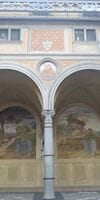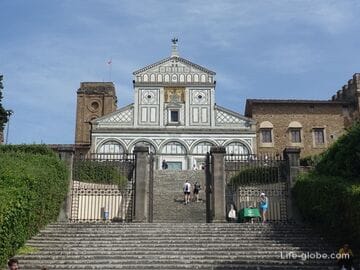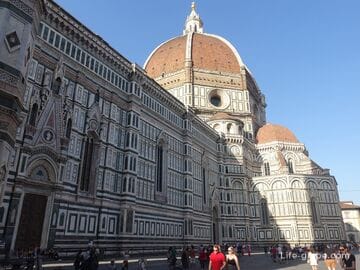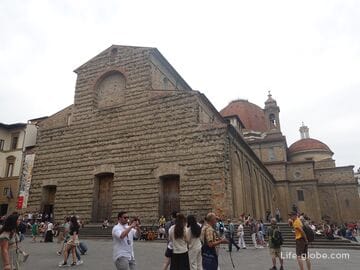Basilica of the Santissima Annunziata or the Most Holy Annunciation / Annunciation of the Blessed Virgin Mary (Basilica della Santissima Annunziata di Firenze) is a Catholic minor basilica in Florence, which is one of the most important sacred buildings in Florence, as well as the main sanctuary of Mary in the city and the motherhouse of the Order of Servants of Mary (L'Ordine dei servi di Maria).
The basilica is part of the monastery complex Santissima Annunziata (Santissima Annunziata).
The church stands out with its main facade, frescoes and rich interior decoration of the Baroque style.
The Basilica is located in the historical part of Florence, on the square of the Most Holy Annunciation of the same name (Piazza della Santissima Annunziata), and its main facade facing the square looks quite unusual for churches - a type of raised loggia that defines the facades of all adjacent buildings of the square.

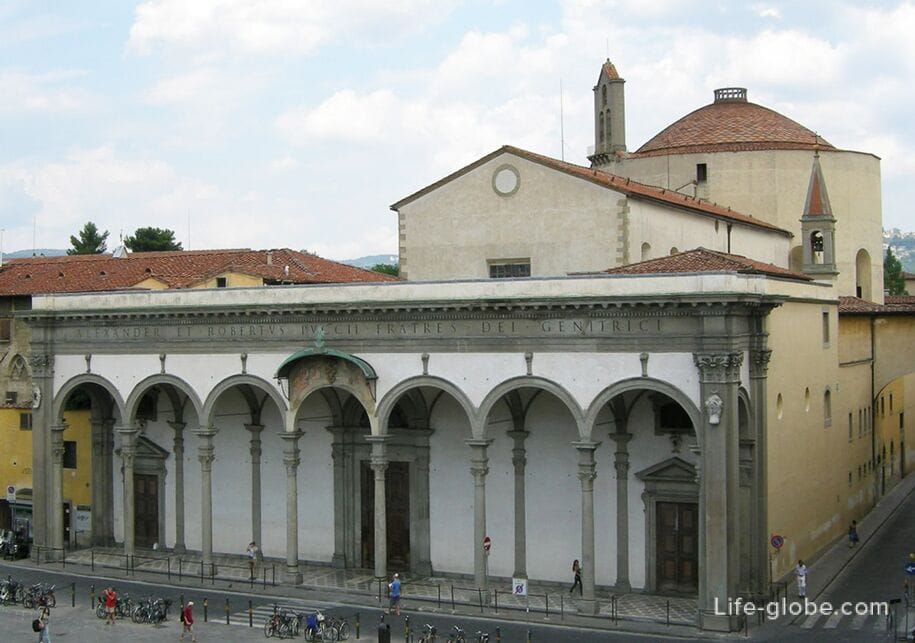
The first church on this site was built in 1250 by monks of the Servite Order (the Order of the Servants of the Virgin Mary).
In 1444-1455, the Italian architect and sculptor of the Renaissance Michelozzo di Bartolomeo added a centric choir with a main altar and nine small apses arranged in a circle to the church. Then (1516) Leon Battista Alberti was engaged in the reconstruction of the basilica, who added a beautiful vestibule with a portico - atrium (Chiostrino dei Voti).
In 1601, the Italian sculptor and architect Giovanni Battista Caccini added a loggia to the basilica (the narthex of the basilica) with an arcade on columns, in imitation of similar loggias that already existed on the square.
The Baroque decoration of the interior of the church was started in 1644, when Pietro Giambelli painted the ceiling with frescoes with the Assumption as the central part according to sketches by Baldassare Franceschini.
Thus, the basilica turned into a complex Renaissance-Baroque composition.
Above the central arch of the outer portico facing the square and being the entrance to the basilica, there are frescoes that were executed between 1513 and 1514 by the Italian painter Pontormo and are now replaced by copies, the originals are in the Museum of the Last Supper of Andrea del Sarto in Florence (Museo del Cenacolo di Andrea del Sarto).
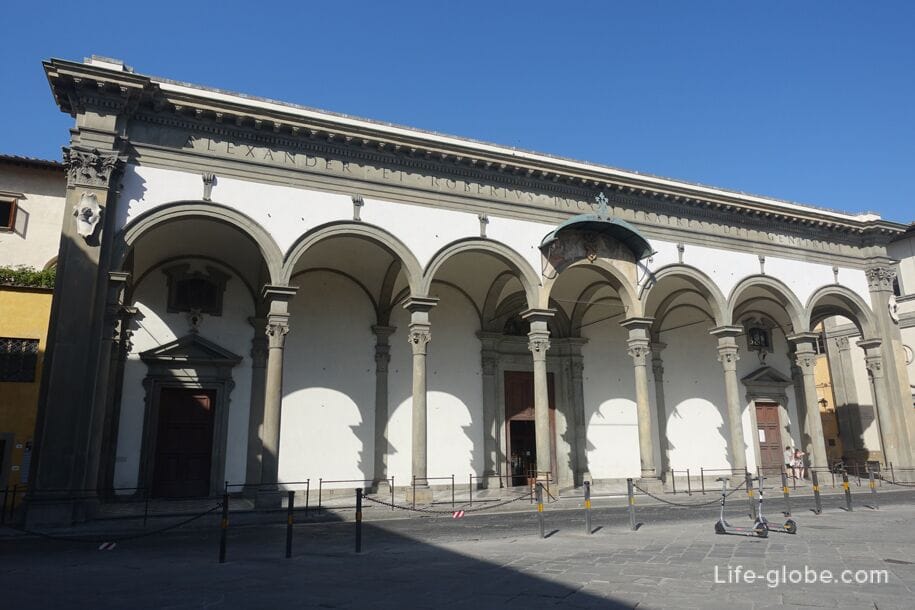
The luten portal is crowned with the "Annunciation" in a mosaic by the Italian painter David Ghirlandaio (1509).

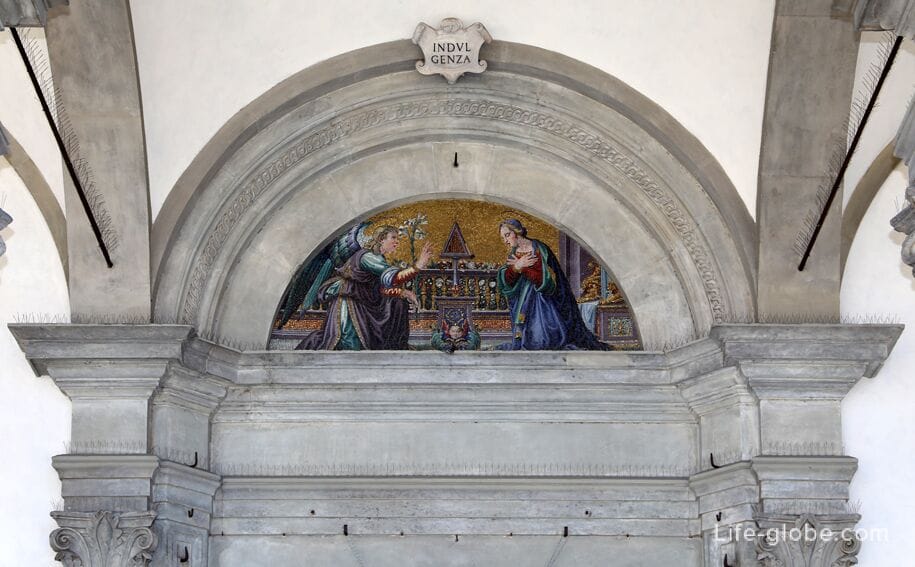
On the right, the basilica building is connected by a covered hanging arch-passage, built by architect Giulio Parigi, with the Crocetta Palace (Palazzo della Crocetta), built in 1619-1621 to accommodate Princess Maria Maddalena de' Medici, sister of Grand Duke Cosimo II, who was in poor health (possibly with mental retardation), and so she could walk in peace to mass, without going down to the street, because it was difficult for her to climb stairs, and also so as not to attract the eyes of outsiders.
At the end of the corridor, a small room with a lattice was built, from where a woman could watch the masses in the church. This corridor is called the "corridor of Maria Maddalena Medici" (Cavalcavia di Maria Maddalena de' Medici).
Today, the former Crocetta Palace houses the National Archaeological Museum of Florence (Museo Archeologico Nazionale di Firenze).
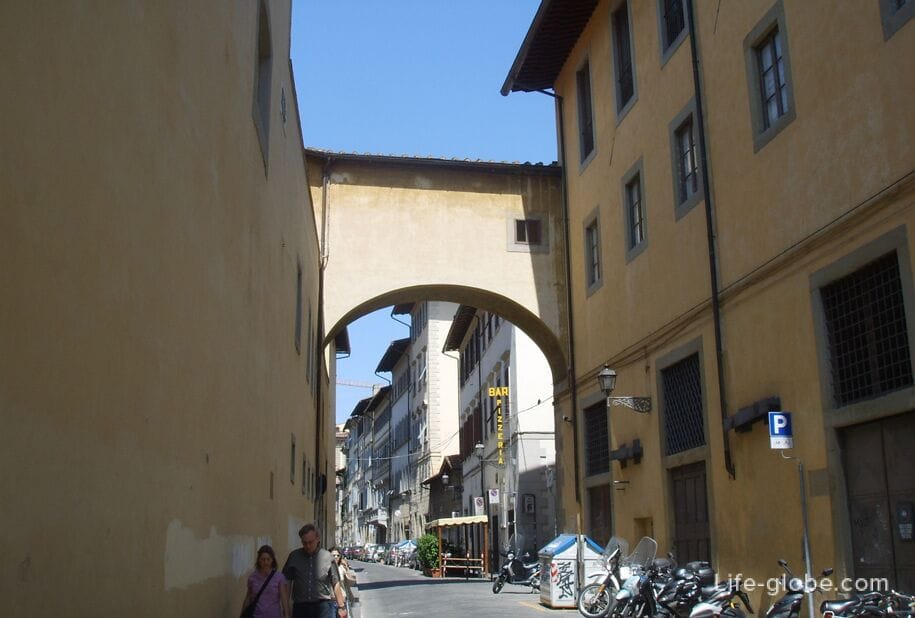
Interior of the Basilica of the Most Holy Annunciation
Entering the central portal, we find ourselves in the atrium in front of the basilica - the arched cloister gallery, known as the "monastery of the vows" or "promised courtyard" (chiostro dei Voti).
For centuries, votive paintings and decorated wooden or plaster statues have been exhibited here, removed and finally destroyed in 1785.
The courtyard is covered with a glass roof and has Corinthian columns supporting the arches of a quadrangular portico, above which there are sixteen lunettes painted with frescoes.
The walls are also decorated with frescoes painted to tell about the life of the Madonna and the Order of Mary's Servants, the Manners workshop in Florence, where Andrea del Sarto, Pontormo and Rosso Fiorentino worked.
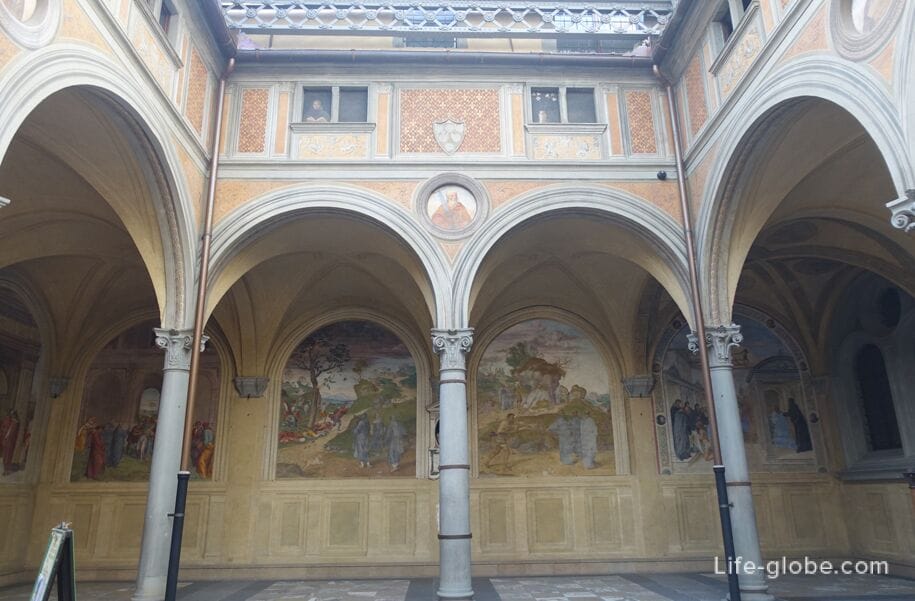
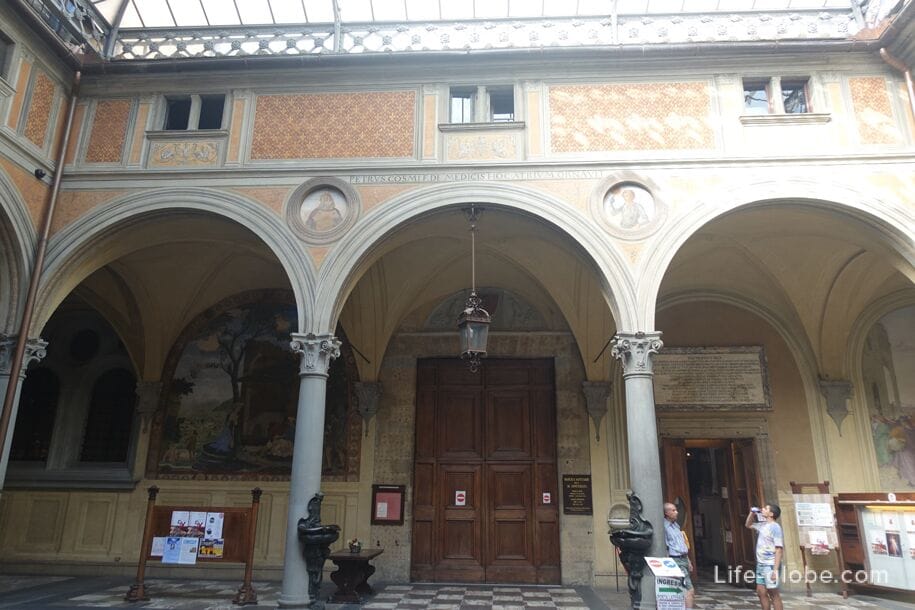
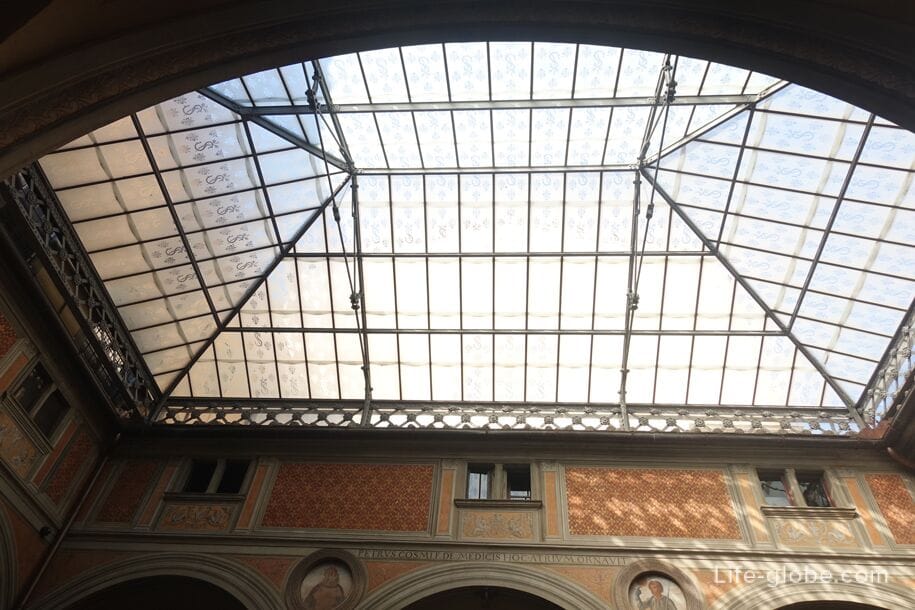
The door on the right under the loggia leads to the chapel of San Sebastiano (Oratorio di San Sebastiano), built by the Pucci family in 1452, designed by Michelozzo.
The presbytery of the chapel was rebuilt in 1608 by Giovanni Caccini and completed by Gherardo Silvani.
The vault is decorated with frescoes by Pochetti, there are also paintings by Padgi and Lomi, two statues by Antonio Novelli. On the altar, the Nativity of the Virgin is copied by Chigoli.
For this chapel, Piero del Pollaiolo painted his masterpiece "The Martyrdom of Saint Sebastian" in 1475, now in the National Gallery in London (National Gallery).
The entrance to the chapel is sometimes closed to visitors.
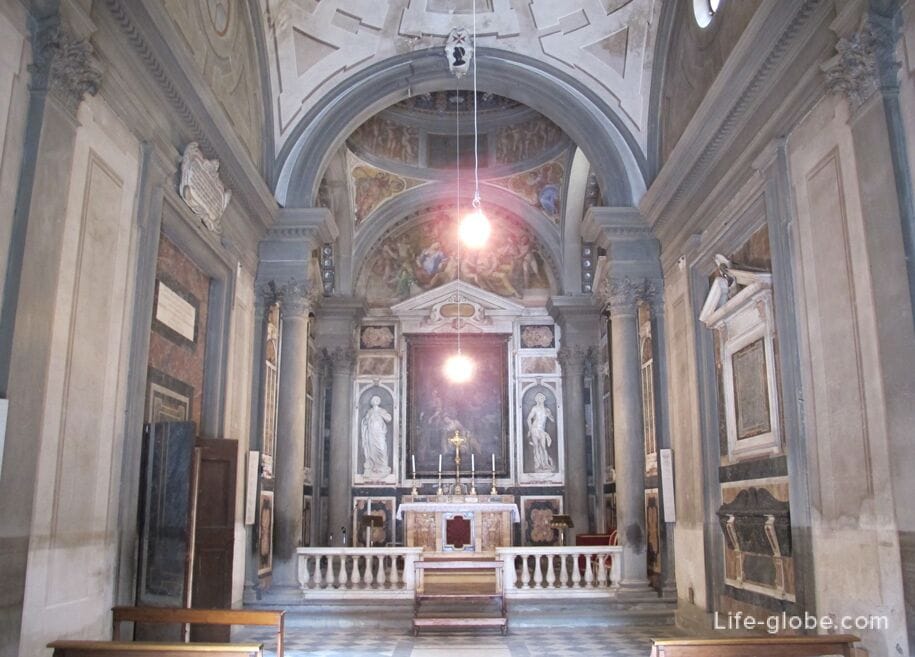
Going through another door, we find ourselves in the Basilica of Santissima Annunziata itself, striking with the splendor of the Baroque decoration, which is especially exquisitely displayed on the ceiling by the Italian artist Volterrano and in an abundance of marble, stucco and gilding.
In the upper part of the basilica hall there are windows and large paintings telling about the most famous Miracles of the Madonna. Almost all of these paintings were painted by Cosimo Ulivelli (1671).

Below, above the arches of the chapels, there are medallions with paintings from 1693-1702 created by Tommaso Redi, Pietro Dandini and Alessandro Gherardini. And the stucco was created by Vittorio Barbieri, Carlo Marcellini and Giovanni Battista Comasco.
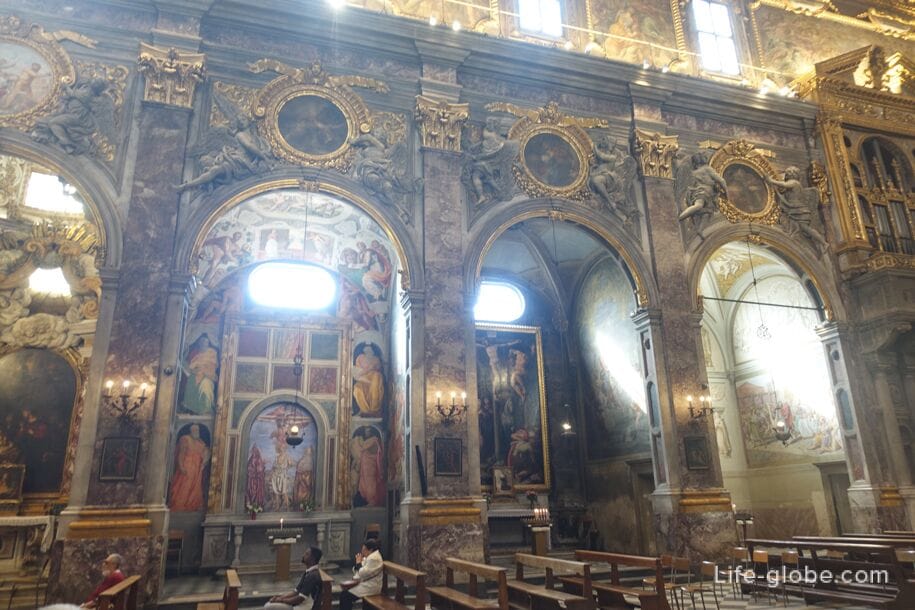
It is particularly worth paying attention to the window with a golden lattice located above the second medallion to the right of the entrance. This window is called the "window of the princes" (finestra dei Principi) and there is a room behind it. Through the window, the family of the Grand Duke of Medici, who came from the Crocetta Palace through the arched covered corridor, could privately attend the liturgical functions that took place in the chapel of the Madonna.
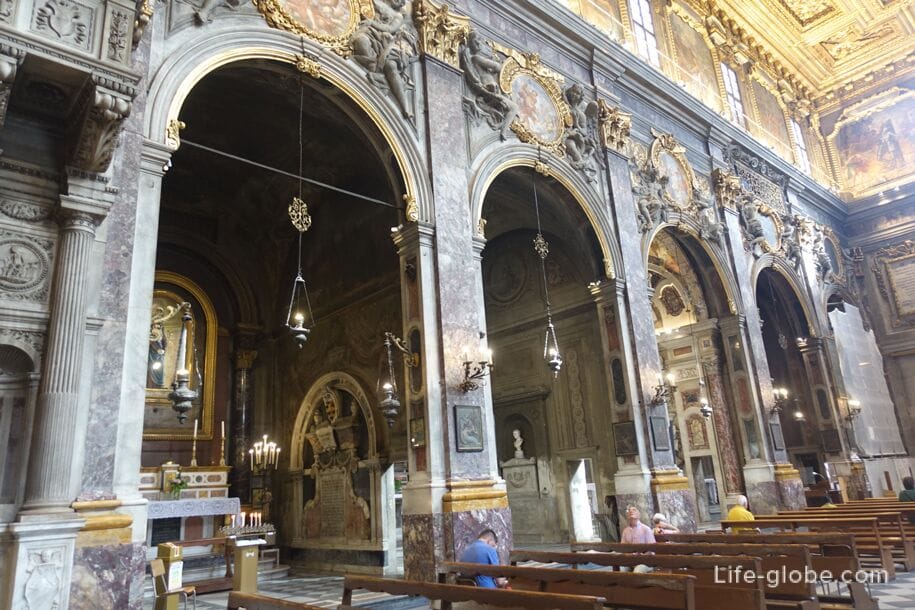
On both sides of the basilica hall there are chapels, whose patrons at various times were the noble families of Florence, and where they had their burials.
Altars, frescoes, paintings and statues can be seen in the chapels.
The organs in the basilica are also notable. The organ, built by Domenico di Lorenzo da Lucca in 1509-1521, is the oldest in Florence and the third oldest in Italy.
Also in the church is the grave of the Italian writer Maria Valtorta. A memorial was erected in the church to the artist Giovanna Tacconi Messini by her husband after her death.
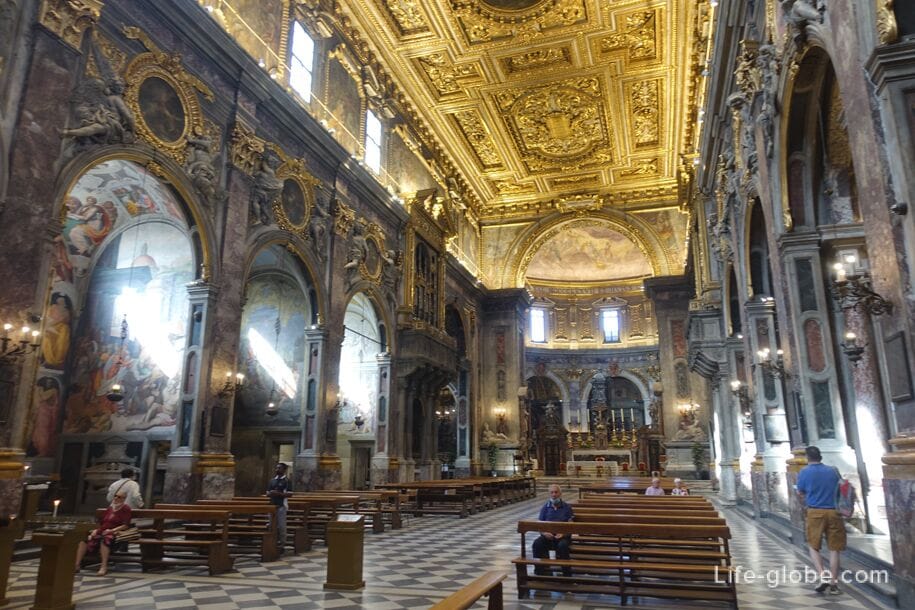
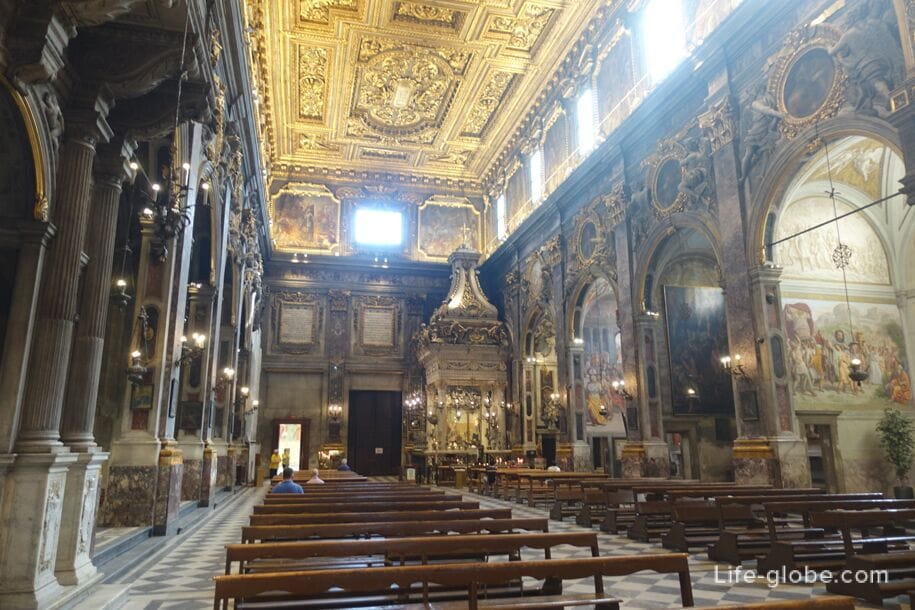




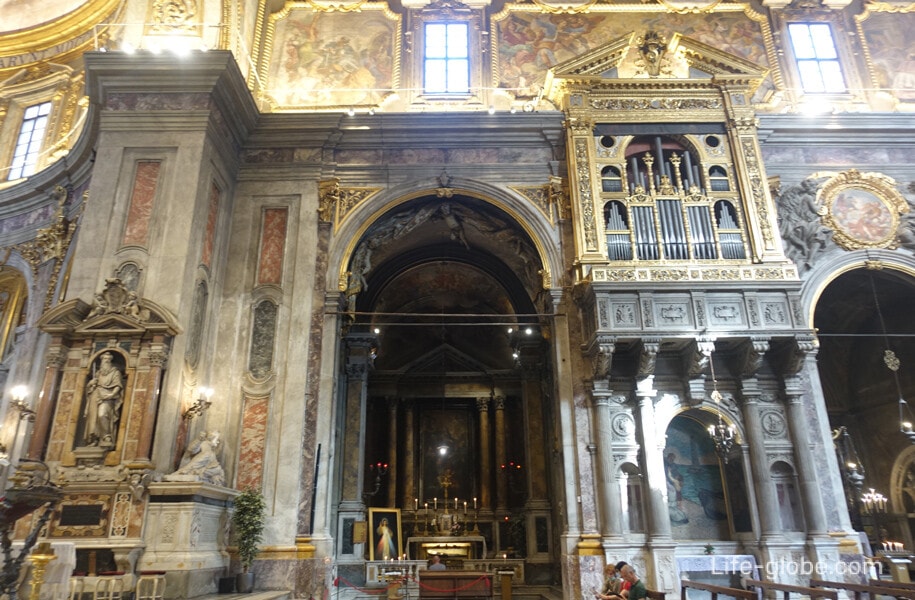
The most famous of the chapels of the basilica is the chapel of the Santissima Annunziata (Cappella della Santissima Annunziata), also called the Annunziata Temple and serving in the nave of the church.
This is the oldest core of the basilica, which has undergone various modifications over the course of history.
There is an altar with a magnificent fresco "Annunciation" of the 14th century depicting Maria Santissima Annunziata.
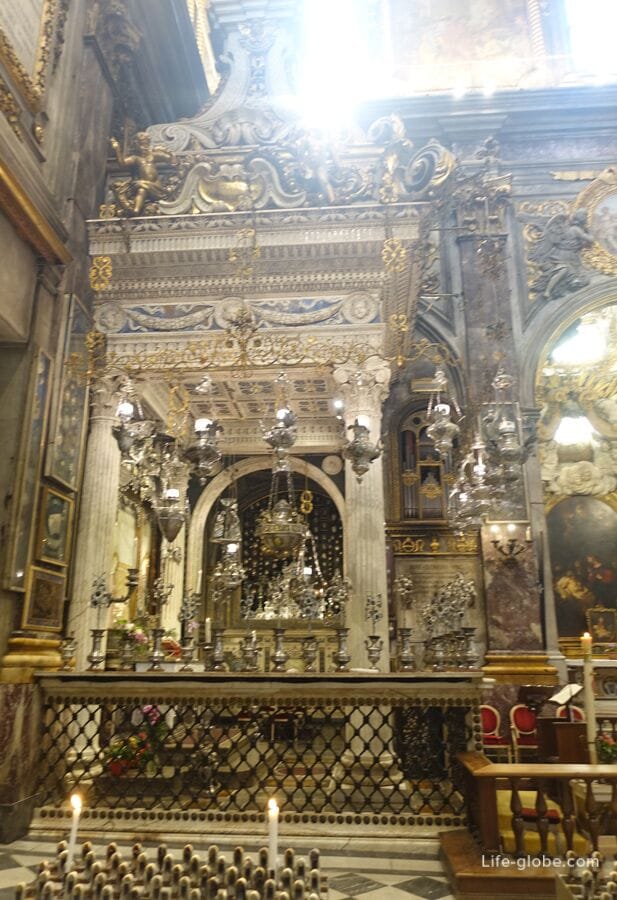
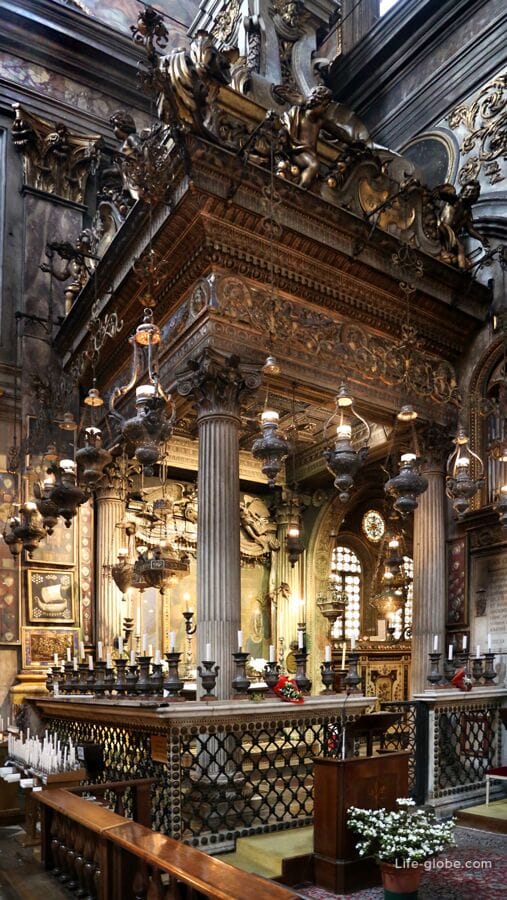
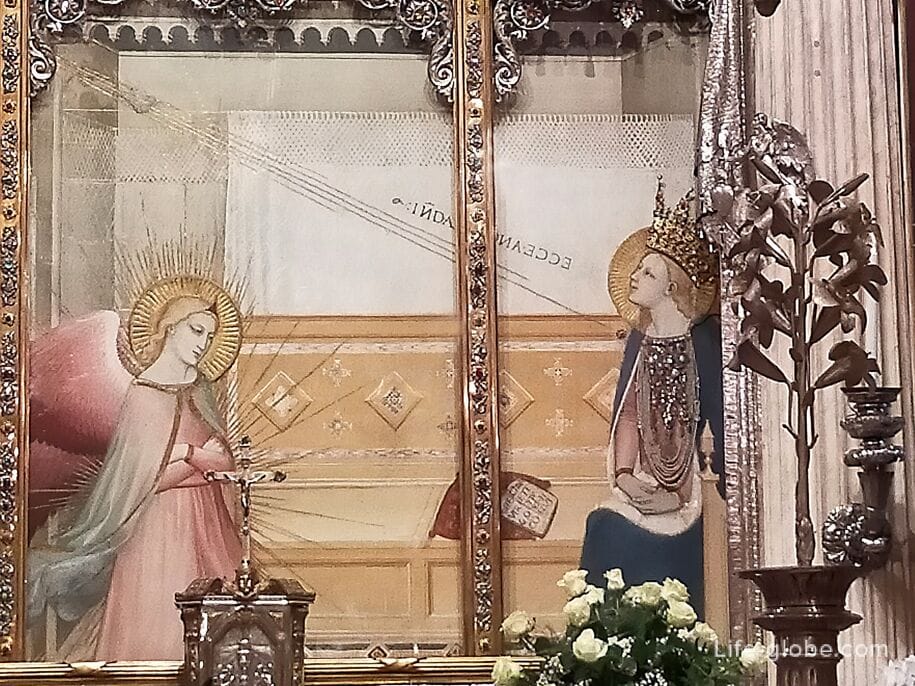
The main altar and the presbytery of the basilica look like a majestic and shining mass of marble.
Like the entire basilica, the altar has undergone transformations throughout history. Perhaps Leon Battista Alberti himself in 1471 created an altar project for which in 1483 Antonio and Giuliano da Sangallo carved a Crucifix from wood, which is now in the chapel of San Gioacchino da Siena.
In 1504, the altar was raised and separated from the choir by a wooden Ancona arch made by Baccio d'Agnolo. In 1546, the panel was removed and a large ciborium carved from wood by Filippo and Giuliano di Baccio d'Agnolo was placed in its place.
In 1655, Antonio di Vitale de' Medici presented the church with the present silver Sancta Sanctorum (Sancta Sanctorum), crowned with a cross made of rock crystal. The designer was Alfonso Parigi, and the performers were Giovanni Battista and Antonio Merlini. The silver facade of the altar, designed by Giovan Battista Foggini, was made in 1682 by the Flemish silversmith Arrigo Brunic. The altar was completed in 1704 according to the project of Giovacchino Fortini, which also includes statues of St. Philip and St. Juliana Falconieri (1705) above the two doors of the choir.
On the sides of the presbytery are two monumental marble edicules by Giovanni Caccini with statues of San Pietro (1601) and San Paolo (1609-1010), created by his pupil Gherardo Silvani according to the project of Caccini himself. On the floor, a memorial plaque marks the burial place of Andrea del Sarto. Leaning against the columns forming the arch of the presbytery are two tombstones of Monsingnor Angelo Marzi-Medici on the left and Senator Donato del Antella on the right (the first monument is the work of Francesco da Sangallo in 1546; the other is Giovan Battista Foggini in 1702).
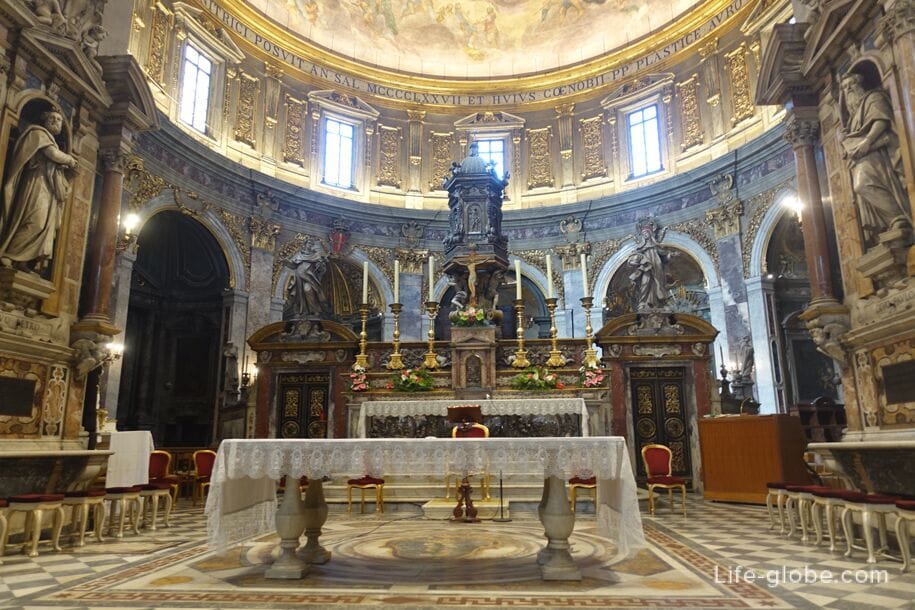

The choir behind the main altar was built by Michelozzo in 1444 in a round shape as a rotunda designed for monks to meditate; and, subsequently, was transformed into a large space with a dome designed by Leon Battista Alberti. The current exterior design of the choir was created by Alessandro Malavisti in 1668, designed by Pier Francesco Silvani. Large marble statues are placed on the walls of the choir.
Inside the choir, the marble floor dates back to 1541; walnut booths modeled on the previous ones, carved by Giovanni d'alesso Unguero in 1538, were rebuilt in 1846. Two brass pulpits depicting an eagle with outstretched wings are a valuable work of the fourteenth and fifteenth centuries (it was recognized that the oldest of them is of English origin). The large walnut pulpit in the center of the choir is the work of Antonio Rossi (1852).
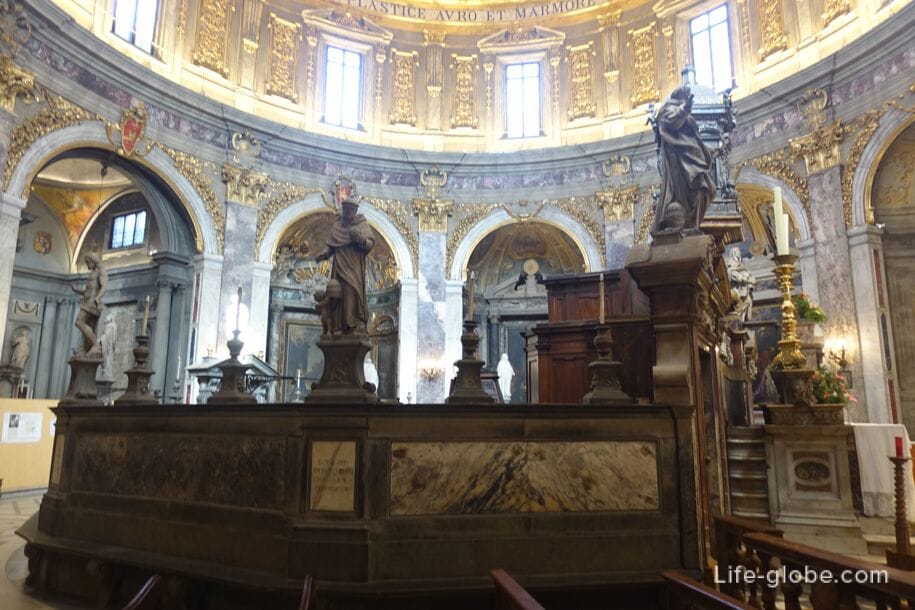
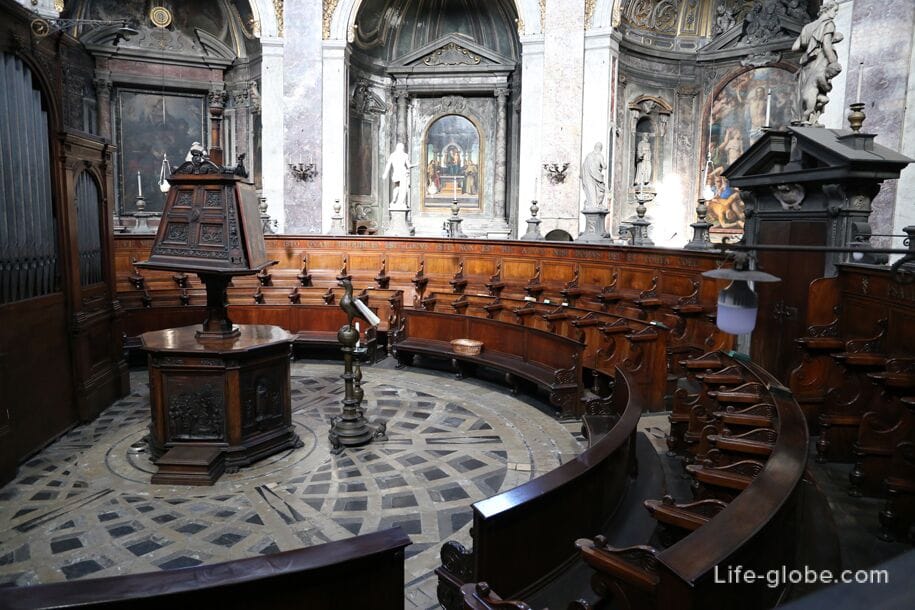
The dome of the basilica above the main altar and choirs was painted by Volterrano in 1680-1683. The Assumption of the Virgin is represented in the dome, which is depicted among the saints from the Old and New Testaments, and is ascended by angels to the throne of the Most Holy Theotokos.
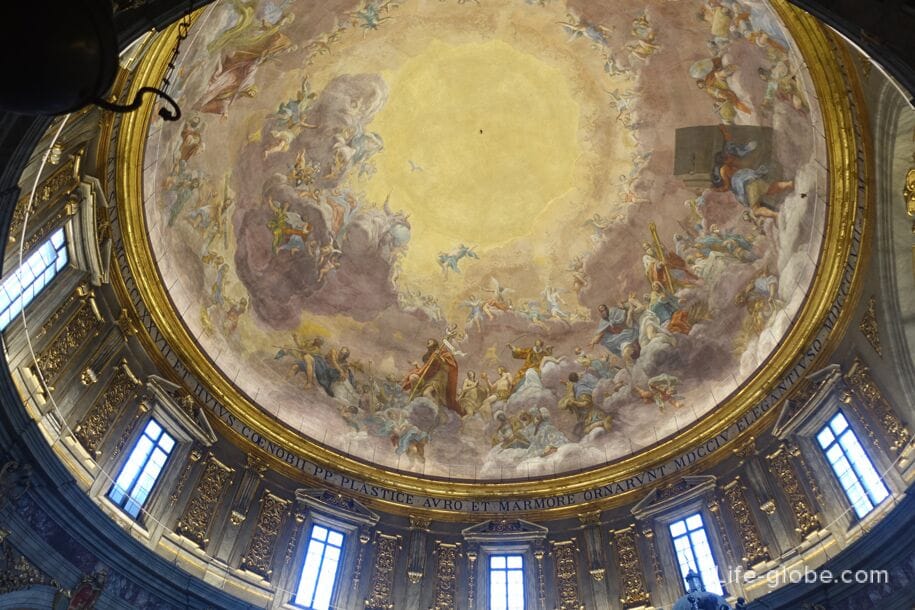
From the altar space there is an exit to the vestibule of the sacristy, at the end of which there is a passage from 1937 leading to the tribune. It was created by Michelozzo and transformed in 1625 into a Presentation Chapel, from which the architecture still remains instead of the altar. These are two small stone statues in the side niches by an unknown artist; the tondo above the coupe is the coat of arms of the Guelphs (Parte Guelfa); a stucco bust on the right, installed in 1592 and transmitting the true image of St. Philip Benisi.
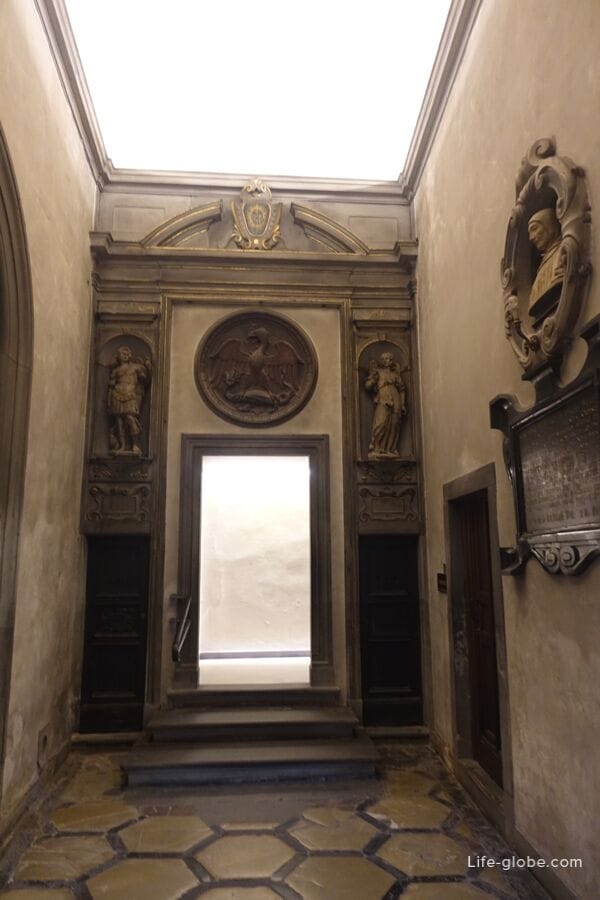
There are chapels in the tribune.
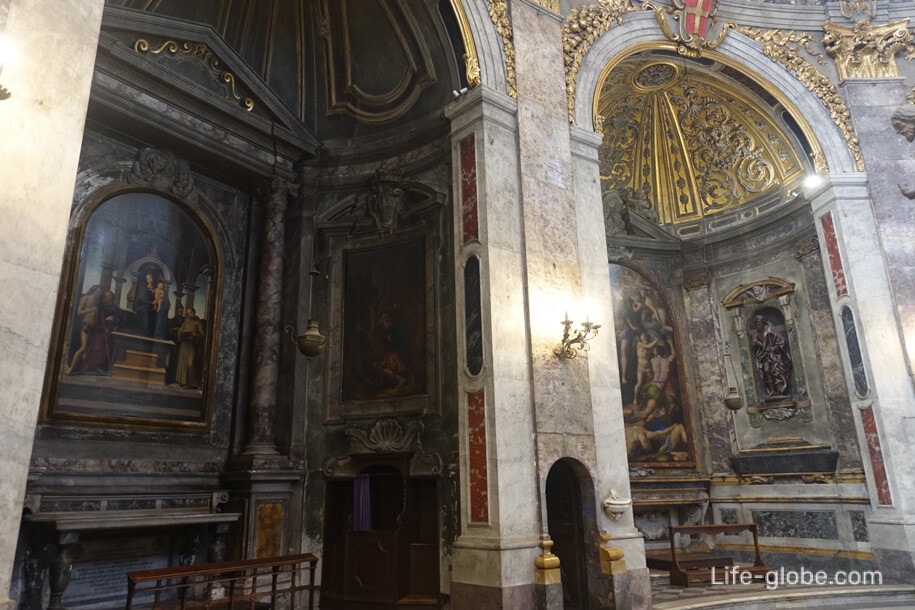
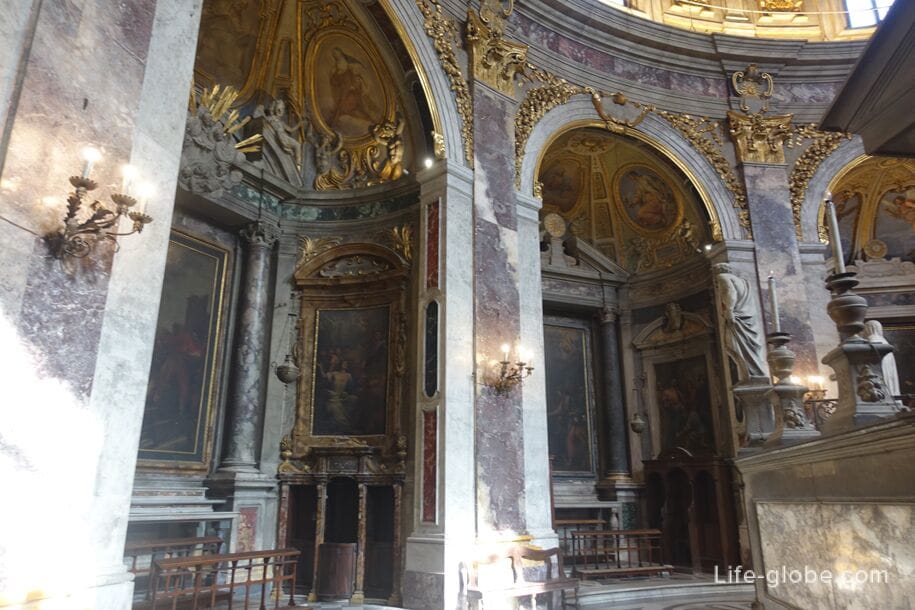
Monasteries of Santissima-Annunziata
The basilica is part of a complex of monasteries.
The Large Monastery (Il Chiostro Grande) can be accessed from inside the church by going through the side door of the left cross.
The large monastery was built in the 15th century by Michelotso.
In the monastery, the cloister, the chapel of the Chapter, the chapel of artists or San Luca and the sacristy of the Madonna attract attention. The clock on the outer wall of the monastery dates back to the 16th century, although it has undergone changes in subsequent centuries. Twenty-five painted lunettes under the arches of the cloister portico were created by the brush of different authors.
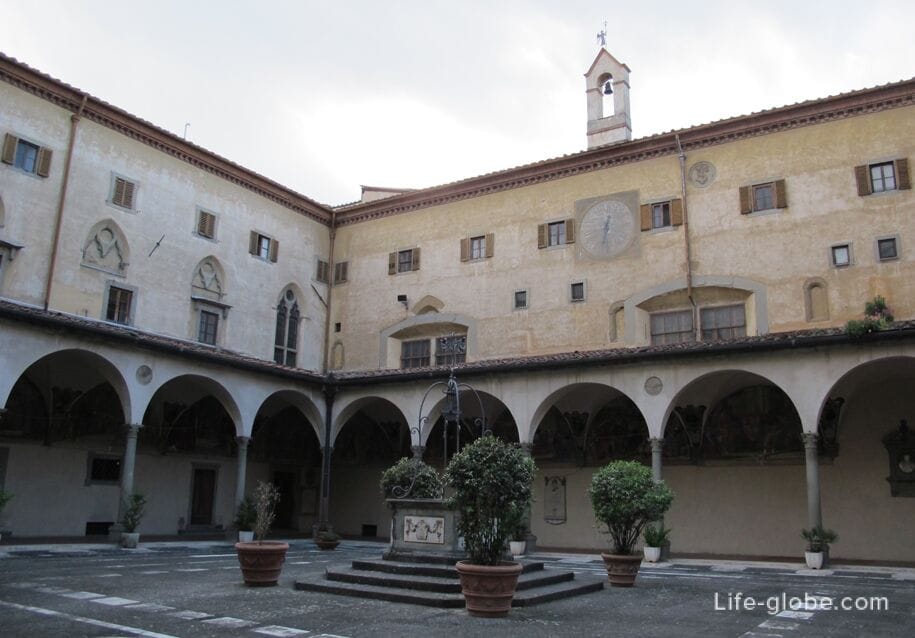

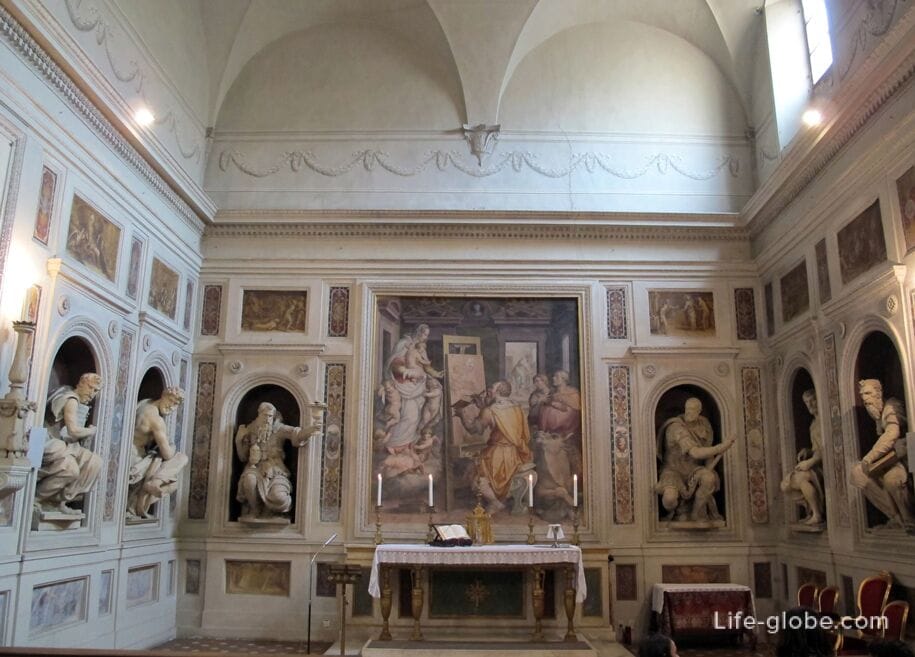
From the large monastery you can go to the Second Monastery (Secondo Chiostro), the data about which dates back to 1322, but in 1371 it was rebuilt with stone columns and two floors. Today, unfortunately, the old monastery is immured and only the corner columns are freed.
In this monastery there are two frescoes by the Italian artist Francesco Montelatici (known as Cecco Bravo) - Mercy and Hope, which are located on the sides of the niche where the statue of Victory once stood (now in the Bargello National Museum), created by the Italian sculptor Ammannati.
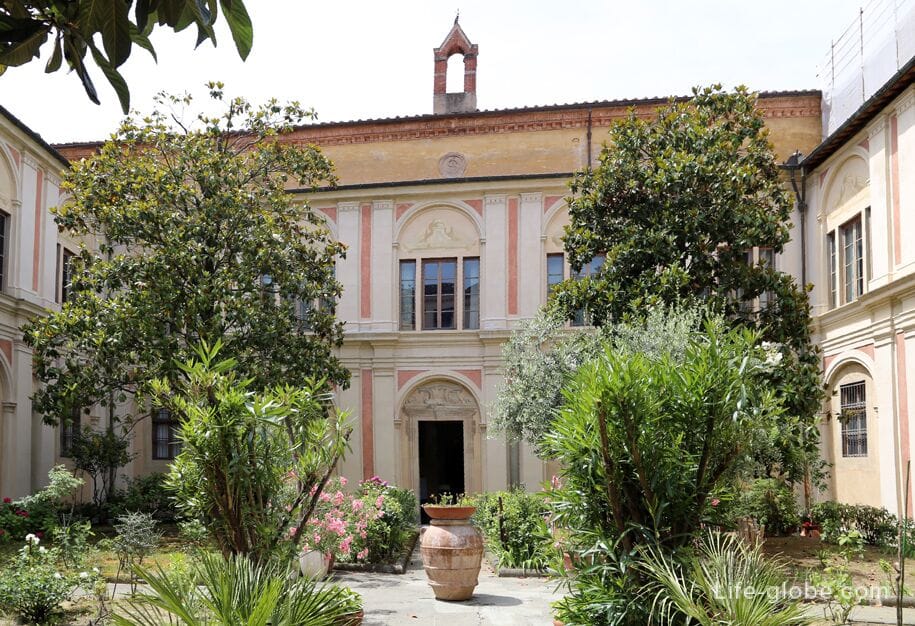
The headquarters of the Military Geographical Institute is located in the western part of the monastery today. Some rooms were discovered here, including a staircase built by Michelozzo, previously hidden, a lunette with an Annunciation attributed to Paolo Uccello, from the grotesques of Morto da Feltre and frescoes depicting flying birds, possibly the work of Leonardo da Vinci and his school. In fact, Leonardo lived in the monastery of Santissima Annunziata for two years.
Practical information
The entrance to the Basilica of Santissima Annunziata is free.
Website of the Santissima-Annunziata complex: annunziata.xoom.it.
The address of the Basilica of Santissima Annunziata: Piazza della Santissima Annunziata, 50122 Firenze FI, Italy.
Coordinates of the Basilica of Santissima Annunziata: 43°46'38.0"N 11°15'42.0"E (43.777222, 11.261667).
All accommodation facilities in Florence (hotels, apartments, guest houses, etc.), including in the historical center of the city and more remotely from it, can be viewed and booked here




